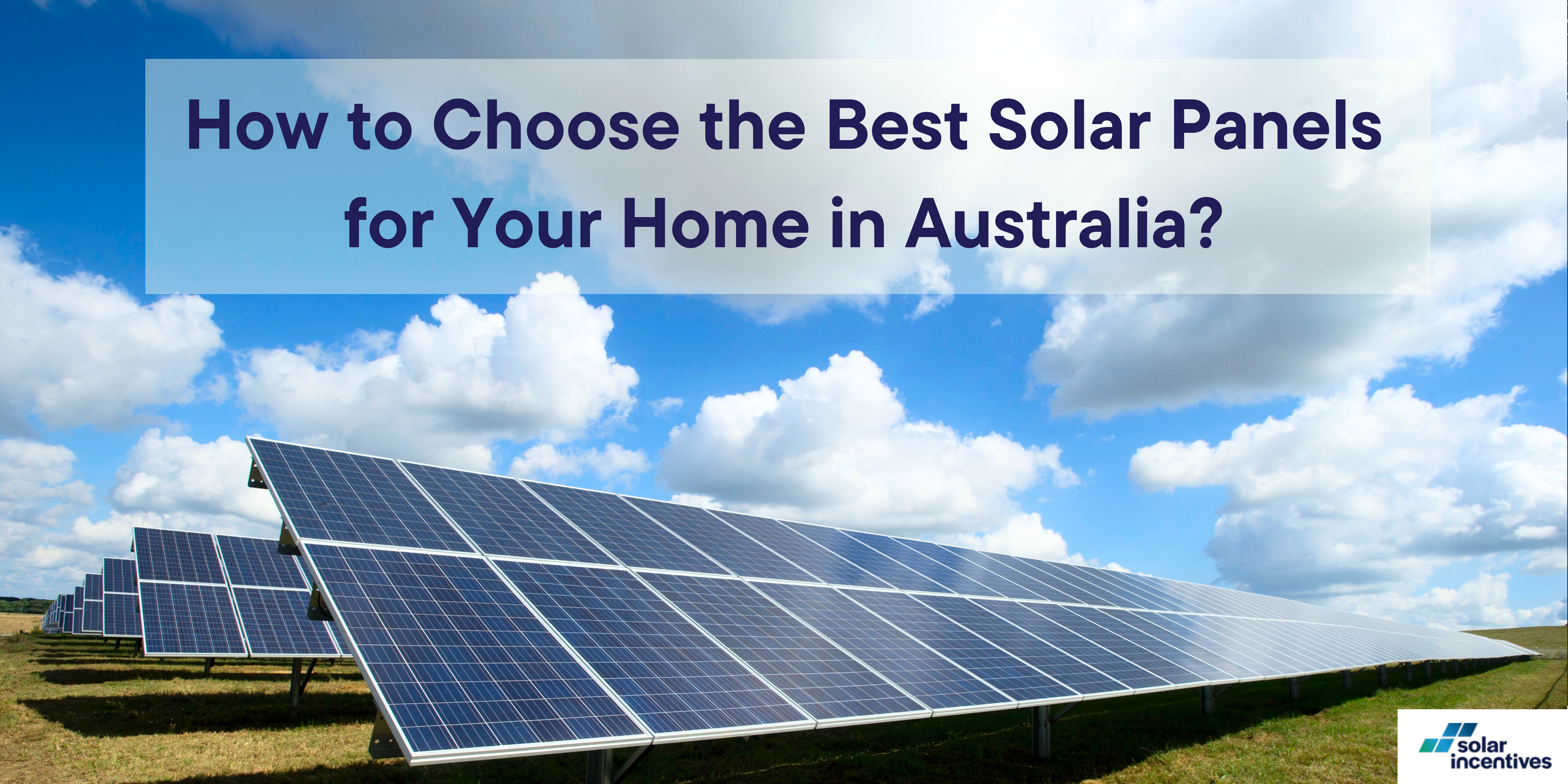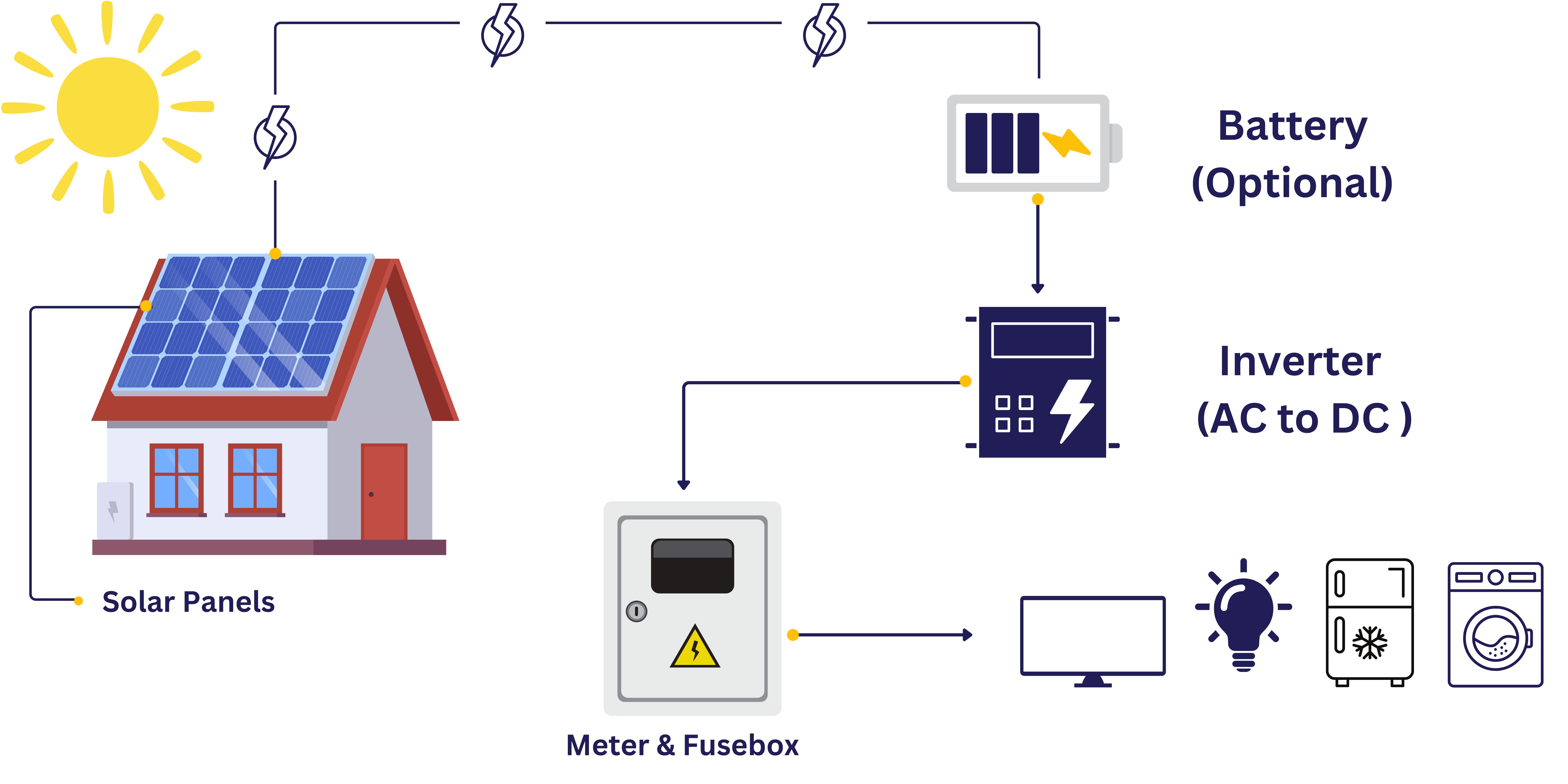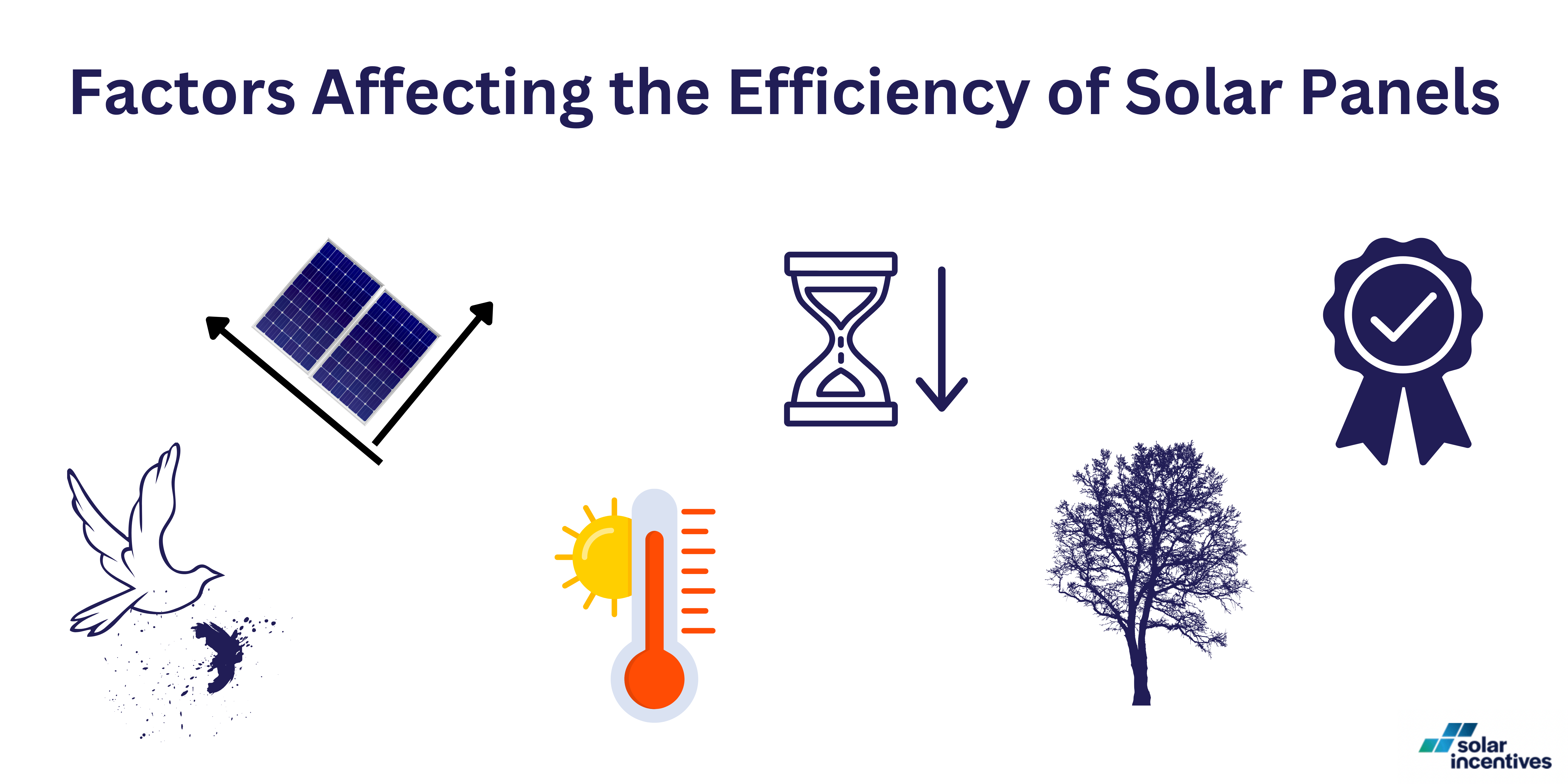How to Choose the Best Solar Panels for Your Home in Australia

Steve Hill
Expert in Residential and Commercial Solar Solutions and Energy Efficiency
4 min read · 1st September 2023
The question of “which solar panels are the best” has gained significant attention in recent years. With Australia’s growing interest in solar power, homeowners are increasingly looking into the best solar panels for their homes.
But how do you decide which solar power panel systems are the right fit for your home? Let’s delve deeper into understanding solar panels for homes in Australia.
What is a Solar Panel?
Solar panels, often referred to as photovoltaic (PV) panels, are devices that convert sunlight, made of energy particles called “photons”, into electricity.
They’ve become indispensable for both residential and commercial power generation.
Beyond homes and businesses, solar panels also support remote sensing, telecommunications equipment, and various other applications.

What Size Solar Panels Do I Need?
The size of the solar panel you need largely depends on your electricity consumption and the area available for installation. To determine the right size:
- Examine your electricity bills to estimate monthly consumption.
- Consider the peak sunlight hours in your location.
- Factor in future power needs
- Space Available for Installation
- Buffer for Variability
By considering these factors, you can make an informed decision about the size of the solar panels you need, ensuring they’re a long-term solution for your energy needs.

How Many Solar Panels Do You Need at Home?
This isn’t a one-size-fits-all answer. The number of solar panels you’d require is a function of:
- Your household’s energy consumption
- The efficiency of the panels you choose
- The amount of sunlight your location receives.
For instance, if you need about 5kWh per day and your panels produce 250W, then you’d need 20 panels.
Here is an example:
- Consumption: Your home uses 400kWh/month.
- Sunlight Factor: 4.5 hours of peak sun x 30 days = 135 peak sunlight hours/month.
- Roof Space: Can fit 20 panels.
- Future Needs: Electric car = +100kWh/month
400kWh/month + 100kWh/month= 500kWh.
Buffer 10% of 500kWh = 50kWh
New total = 550kWh/month or 18.3kWh/day.
Panel Requirement: 18.3kWh ÷ 250W (per panel) = 73.2W needed. Round up to 74W, so 16 panels (at 250W each).
However, with advancements in technology, solar panels are becoming more efficient, potentially reducing the number of panels you might need.
Types of Solar Panels and Their Pros & Cons
Monocrystalline Panels
Pros:
- High efficiency: Typically around 15-20%.
- Sleek design: They have a uniform black appearance, making them visually appealing.
- Space-efficient: Because of their high efficiency, you might need fewer panels.
Cons:
- Cost: They are more expensive than other types.
- Waste: The process of cutting cylindrical silicon wafers can waste silicon, although this has improved over time.
Polycrystalline Panels
Pros:
- Lower cost: Generally cheaper than monocrystalline panels.
- Less waste: The process of making them uses silicon more efficiently.
Cons:
- Lower efficiency: Typically, they hover around 13-16%.
- Aesthetics: They have a blue, speckled appearance which some find less attractive.
Thin-Film Panels
Pros:
- Versatility: Can be integrated into roofs, windows, or used in larger areas.
- Lightweight: Suitable for some roofs where weight might be an issue.
- Aesthetically pleasing: No rigid frames or crystalline structures.
Cons:
- Efficiency: Generally, they are less efficient, ranging from 10-12%.
- Space: They take up more space, making them unsuitable for small roofs.
- Degradation: They can degrade faster than crystalline-based panels.
Concentrated PV Cell (CVP)
Pros:
- High efficiency: Often above 20% and can even reach 40% under optimal conditions.
- Modern technology: They use cutting-edge tech to boost efficiency.
Cons:
- Cost: They are expensive due to the advanced technology used.
- Requires cooling: Needs cooling systems which can be bulky.
- Tracking system: They need to be aligned with the sun throughout the day, requiring sun-tracking systems.
Are Solar Panels Efficient?
The efficiency of solar panels depends on their ability to convert sunlight into electricity.
With today’s technology, most solar panels have an efficiency range between 15-20%. Continuous advancements aim to push this boundary further.
Factors Affecting the Efficiency of Solar Panels

Temperature
- Explanation: Solar panels, paradoxically, can see reduced efficiencies in extremely high temperatures. While they need sunlight to produce power, excessive heat can impede their performance.
- Mitigation: Installation best practices recommend leaving a gap between the solar panel and the roof to allow for air circulation and cooling.
Angle and Positioning
- Explanation: For optimal power generation, solar panels should be oriented correctly. In Australia, this typically means facing north.
- Mitigation: Using adjustable mounting systems, you can change the angle based on the season or even employ tracking systems to follow the sun.
Dirt and Debris
- Explanation: Accumulation of dirt, leaves, or bird droppings can obstruct sunlight, reducing efficiency.
- Mitigation: Regular cleaning and maintenance can keep panels operating at peak efficiency.
Age
- Explanation: Over time, solar panels degrade and produce less electricity. The industry standard degradation rate is about 0.5% annually.
- Mitigation: Opt for quality panels from reputable manufacturers. Some panels have a much lower degradation rate than the industry average.
Shading
- Explanation: Shading from trees, buildings, or other obstructions can significantly impact the performance of solar panels.
- Mitigation: Before installation, conduct a thorough site assessment to identify potential shading issues and position panels accordingly.
Panel Quality
- Explanation: Not all solar panels are created equal. High-quality panels might cost more upfront but will often have higher efficiencies and longer lifespans.
- Mitigation: Research manufacturers, read reviews, and consult professionals before making a purchase.
Start Living Smart for Ourselves and the Environment
Shifting towards sustainable energy sources like solar power is a boon, especially in sunny Australia.
Tapping into this abundant energy form is not just economical, but it’s also an ecological imperative.
Considering the move? Engage with Solar Incentives to explore more about your solar needs.
Article By
Steve Hill
Steve Hill has a rich background in the solar energy sector and is dedicated to empowering consumers with knowledge, particularly in residential and commercial solar solutions, solar batteries, and energy efficiency products.
Steve enjoys sharing his wealth of experience, offering practical advice, and learning about the latest trends and innovative solutions in the world of solar energy.

